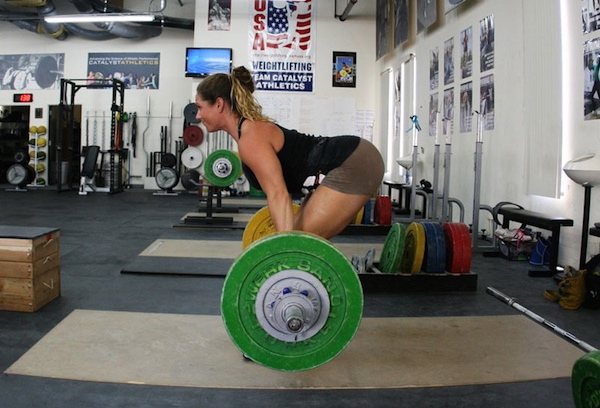Guest Post By John Alvino
What is your main motivation for going to the gym? Does it stem from an intense desire to increase your mobility? I didn’t think so. Mobility training isn’t fun and it doesn’t give us the psychological satisfaction that “real” training provides. Not only that, it’s boring! And it takes patience, effort, and dedication.
For these reasons, it’s rarely done.
This is an unfortunate fact because for many of us, mobility is the most important fitness quality to develop and maintain. Without it, your movement ability, joint health, and quality of life can all be seriously compromised.
If that hasn’t convinced you to get your stretch on, consider this: in order to safely and effectively train for your primary goal (muscle building, fat loss, strength, etc.), you MUST include mobility work regularly into your routine to achieve optimal training results.
Even with this awareness, however, most people will still find an excuse to blow off mobility training. I know because I did for years. And the results weren’t pretty.
Luckily, I’ve found a foolproof way to ensure that at least some mobility work gets done, even by the most stubborn of meatheads. I also have a few training techniques that, if utilized consistently, will help develop and maintain your mobility without a high volume of focused stretching.
Don’t get me wrong, a dedicated mobility routine can be great for your overall training longevity and health. However, for those of you with an aversion to the yoga mat, here is creative solution to your mobility problem:
1) Include Mobility Work as Part of Your Warm Up
This simply guarantees that it gets done. Foam rolling, dynamic movements, and active stretches can take just 5-10 minutes, and if performed correctly, can help to prepare you for the training session to follow, while simultaneously working on mobility, flexibility, and tissue health. Minimal time, maximal benefit!
2) Utilize a Full Range of Motion (ROM) on Your Strength Training Exercises
This helps to keep your muscles strong and flexible throughout your joints’ full ROM. Alternatively, cutting your ROM short during training causes your muscles to shorten, thus leading to DECREASES in your ROM. This is not good!
3) Train Your Body with Functional Movements
Functional movements require you to stabilize your body/joints while performing a task. This is in stark contrast to most popular gym exercises, where a machine (or another apparatus) allows you to train a muscle in isolation without the need to stabilize the corresponding joint and/or the body as a whole.
Without the ability to stabilize effectively, the nervous system tends to tighten up muscles in an attempt to help protect an unstable joint. This obviously can directly interfere with mobility and movement ability.
4) Add Specific Strength Exercises to Your Routine That Contribute to Mobility
Utilizing these movements really helps to kill three birds (active stretch, strength, and stability) with one stone. And for those who just hate to stretch, these exercises don’t at all resemble a tedious stretching drill. Instead, they just may become some of your favorite strength training movements! Here are some of my personal favorites:

Romanian Deadlift (RDL)
This exercise is great at strengthening the entire posterior chain (hamstrings, glutes, spinal erectors). It does so in a way that requires total spinal stability while loading the hamstrings in their fully stretched position. It is this loaded stretch that can work wonders for your hamstring flexibility.
Rear Foot Elevated Split Squat (RFESS)
The RFESS is to the quads what the RDL is to the hamstrings. Not only does it strengthen the quads, it does so by loading them in their stretched position. As a side note, I don’t recommend going super heavy on these. Instead I prefer to use a full ROM and a pause at the bottom.
Overhead Squat
The overhead squat is a great exercise to add to your arsenal. To perform it properly, optimal mobility at the hips, shoulders, thoracic spine and ankles are essential. These are common areas of tightness and loss of ROM. And that’s exactly why it’s such a great exercise to master.
Not only does the overhead squat improve mobility like few other exercises, it also returns massive dividends of full body strength development. This one really separates the men from the boys.
For more information on how to properly perform this essential lift, keep your eyes open for an upcoming post from yours truly.
Sprinting
Notice I said “sprinting” and not “running.” Long distance running involves a small stride that more closely resembles shuffling the feet. This stride can actually contribute to losses in mobility.
Sprinting, on the other hand, requires a full cycling of the hips, which in essence mobilizes them through their full ROM. Sprinting is great for power development, conditioning and aesthetics. The mobility effect is just an added benefit, albeit an important one.
Working these exercises into your routine will definitely decrease the volume of stretching required to get/stay flexible. Better yet, these exercises will contribute to your primary goal (strength, muscle building, fat burning, etc.) while helping you stay mobile! So get out of your “downward dog” and get to work!
To read more from John Alvino, check out his blog. JohnAlvino.com


